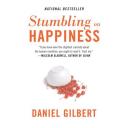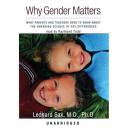This book in audio format is a good listen. Very funny and interesting on how human brain work to make us alive and happy.
1. Human brain tends to take snapshot of our memory – a bad “wizard.” We fill in the gaps to make things seem continuous. Our perception of happiness or unhappiness may depend on a lot of factors.
2. We have an emotional circuit breaker that allows to take on traumatic experience more readily than things that don’t trigger the circuit breakers. For example, a wife can forgive the spouse sexual transgression but cannot tolerate or forgive the husbands’ not taking out the garbage last week.
3. Happiness is rarely as good as we imagine it to be, and rarely lasts as long as we think it will. The same mistaken expectations apply to unhappiness.
4. People do a poor job of predicting how they will feel because they focus on a given theme without consideration for others. We may as well ask people’s experience than to predict it ourselves.
5. This book doesn’t give you some magic pill on becoming a happy person, but it may give you some insight into how your mind processes your self talk.
6. Happiness is a state of mind that are very subjective and dependent on what you’re comparing to. Our mind doesn’t work well in isolation. Experiencing shorting electrical shocks after some long ones are better than all long shocks.
7. Because of how our minds work, pleasing people or making people happy may be more of playing tricks on one’s mind than really doing good things for that person.
8. For a people manager, making an employee happy may take a very different strategy. This may sound like a deception but it’s no more guilty than our brains.
9. Writing personal journal has a way to capture one’s state of mind that’s not altered by the brain’s filling the gap. This is a good way to assess one’s happiness in retrospect.

This is a great book about how boys and girls are hardwired to be different and how to deal with their differences.
The main take-aways for me:
1. Girls listen better than boys. Put boys in the front of class helps.
2. Boys like to take risks and enjoy thrill while girls tend not to. This is why scaring boys about the negative effects of drug does not work well. “Victim-orient” discussion is best for girls but not for boys. And boys don’t really “feel” things.
3. What the recent phenomenon of hook-up means to boys and girls and how to prevent boys and girls from hooking-up.
4. Co-ed schools may be harmful for girls who tend to lack self-esteem and not take risks. And it’s harmful for boys who may be compelled not to take arts and literature and other seemingly feminine activities. Having been educated in an all-boy school, I felt I was deprived of the skills in dealing with girls. This has negative effects as well. I think there needs be balance.
5. The harmful effects of ignonymous male – being rejected by male and female friends.
6. The difference between gays and trans-sexual. Gays tend to be more masculine than non-gay. Not true for lesbian. And the physiological difference between male and female is bigger than male and gays. Bi-sexual is rare for men – more as a cover up for homosexuality. Bi-sexual for women is not unusual but not necessarily in the sexual sense.
7. Girls who play sports tend to do well due to high esteem and less likely to be teen mom or suicidal. Should encourage girls to take risk and sports activities and boost girls’ self esteem. On the other hand, boys who play sports has higher risk to get a girl pregnant.
8. Being strict with girls work by allowing them to have a way out of activities they may not want to do but forced to do by peer pressure.
9. The fact that being masculine and feminine are independent. The self tests at the end are interesting.
I’ve learned a lot from the book. Very useful for raising a child – boy or girl.

Learn by Blogging (and Sharing) – Derek Tsai's Personal Blog


